AMD Ryzen 7 8700G and Ryzen 5 8600G Review: Zen 4 APUs with RDNA3 Graphics
by Gavin Bonshor on January 29, 2024 9:00 AM EST- Posted in
- CPUs
- AMD
- APUs
- Phoenix
- 4nm
- Zen 4
- RDNA3
- AM5
- Ryzen 8000G
- Ryzen 7 8700G
- Ryzen 5 8600G
dGPU Gaming Performance: 4K
Last, we have our 4K gaming results.
We are using DDR5-5200 memory as per the JEDEC specifications on the Ryzen 7 8700G and Ryzen 5 8600G, as well as DDR4-3200 on the Ryzen 7 5700G and Ryzen 5 5600G. The same methodology is also used for the AMD Ryzen 7000 series and Intel's 14th, 13th, and 12th Gen processors. Below are the settings we have used for each platform:
- DDR5-5200 CL44 - Ryzen 8000G
- DDR4-3200 CL22 - Ryzen 5000G
- DDR5-5600B CL46 - Intel 14th & 13th Gen
- DDR5-5200 CL44 - Ryzen 7000
- DDR5-4800 (B) CL40 - Intel 12th Gen
Civilization VI
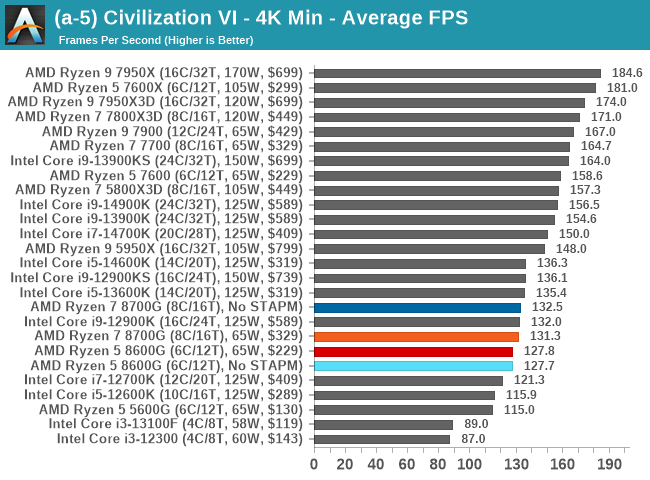
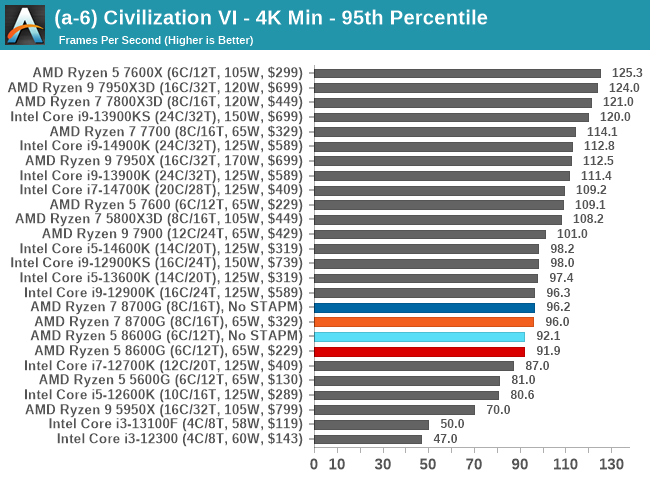
World of Tanks
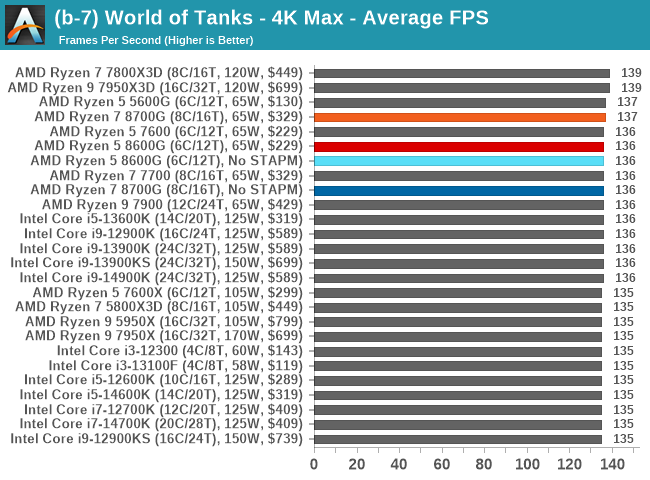
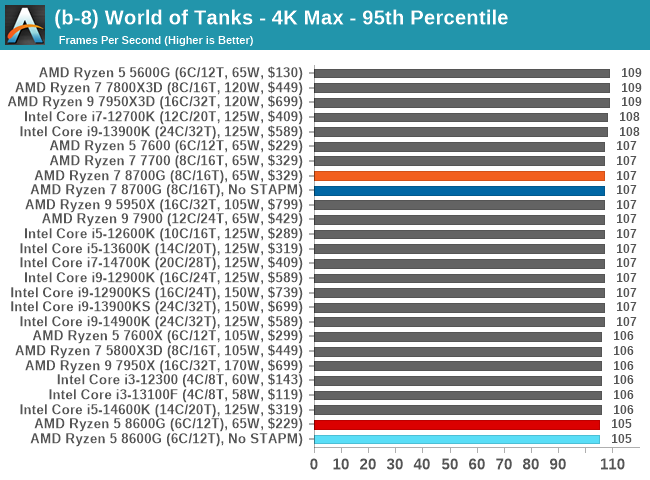
Borderlands 3
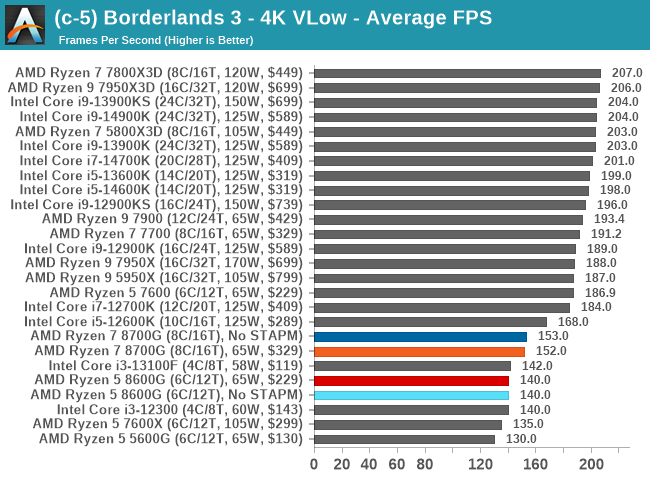
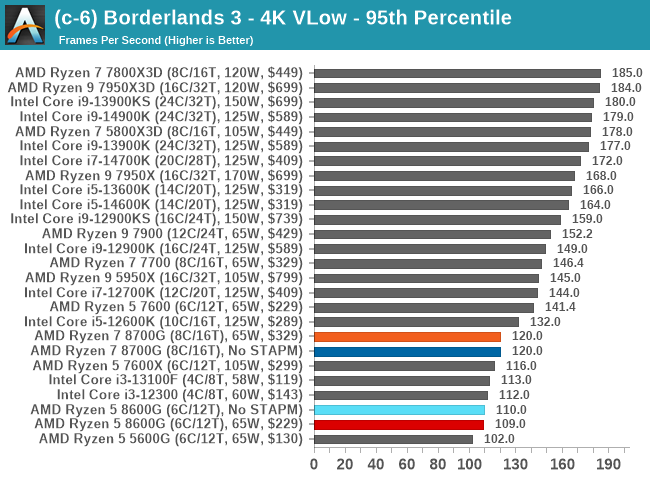
Red Dead Redemption 2
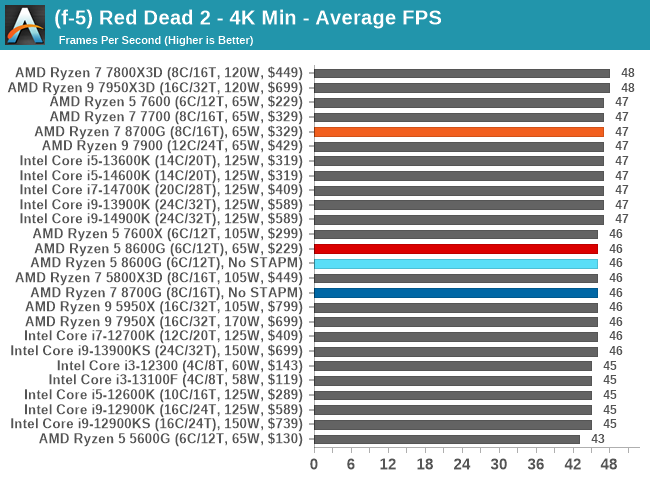
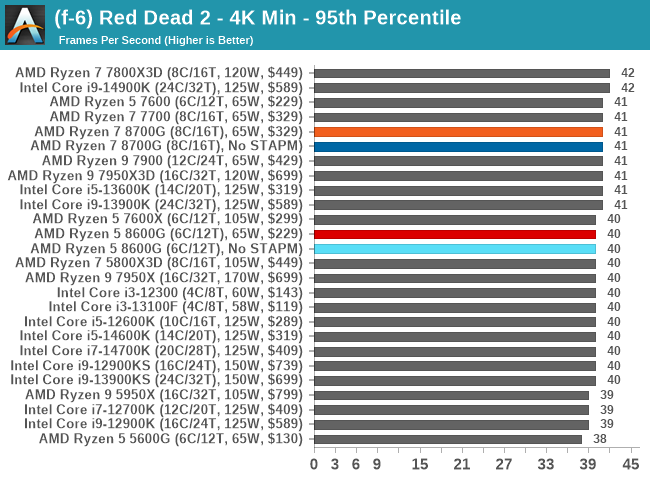
F1 2022
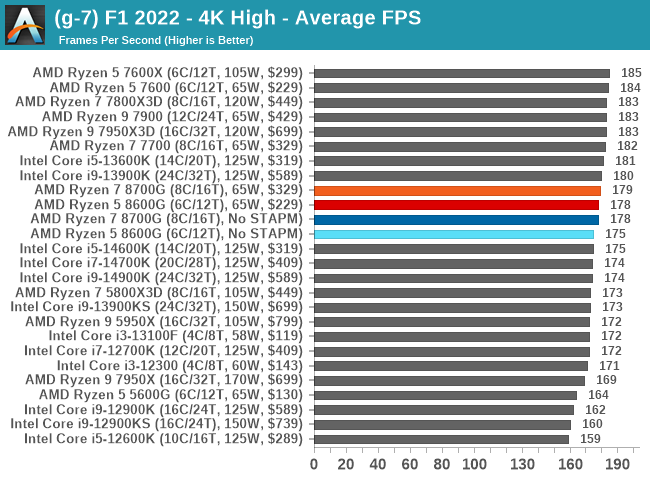

Hitman 3
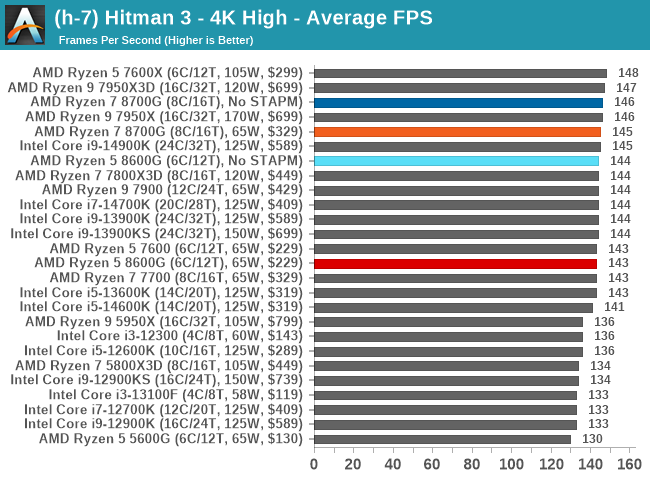
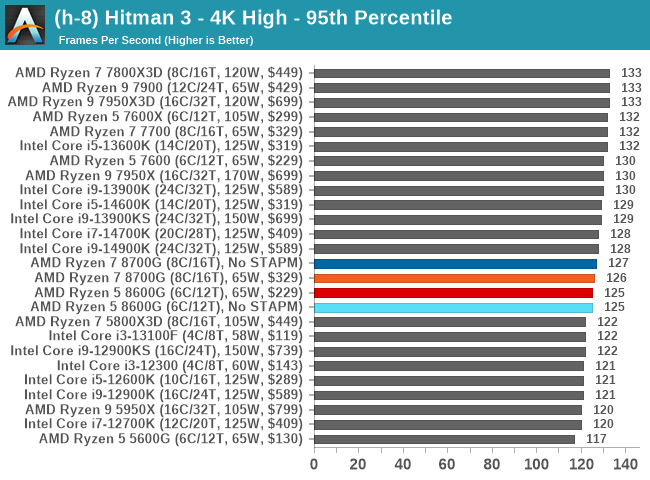
Total War: Warhammer 3
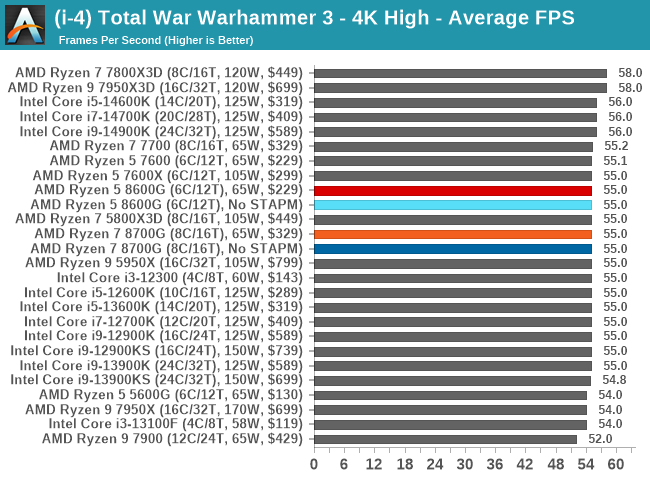
Lastly, we have discrete gaming performance at 4K resolutions, which is inherently a more GPU-bound resolution than it is CPU. We see much the same thing as we did at 1440p, with Total War Warhammer 3, F1 2022, and Hitman 3 showing beneficial performance to the APUs when paired with a discrete graphics card. Other titles, such as Civilization VI and Borderlands 3, which do require adequate CPU grunt to improve framerates, show where the limitations of the Ryzen 8000G lie.
With STAPM limitations removed, we see nearly identical performance when testing with a discrete graphics card as we did with STAPM implemented.










111 Comments
View All Comments
goatfajitas - Monday, January 29, 2024 - link
Whoa, 428 watts at peak for the i9-14900K? I have not paid close attention to the last few rounds of releases and I knew it was bad but wholly crap. WTF Intel?jrbales@outlook.com - Monday, January 29, 2024 - link
Yeah, they definitely get pretty toasty, of it's imperative to plan out a cooling strategy to keep the CPU and other components from roasting. Of course, it does allow you to use it as a space heater in addition to a computer in cold weather. The highest TDP Ryzen 7000 CPUs run "cool" by comparison.goatfajitas - Monday, January 29, 2024 - link
Yes, it would make a good "Winter PC" LOLshabby - Monday, January 29, 2024 - link
Are they available in russia? They need them desperately to heat their frozen homes 😂GeoffreyA - Tuesday, January 30, 2024 - link
Maybe the US should donate a few out of the kindness of their hearts.ricebunny - Monday, January 29, 2024 - link
Peak power is an irrelevant metric. It’s more of a motherboard feature than anything else - Intel’s Raptor Lake will pull as much power as you give them.For those who are concerned about power, there is a TDP ceiling feature. Once set, the Intel CPU will adhere closely to the limit. Laptop tests have shown the Intel Raptor Lake to be about as power efficient as the Zen 4. Take a look at Ars’s review of Framework 13.
goatfajitas - Monday, January 29, 2024 - link
It is not irrenevant and is not a mobo feature. It is how much power is drawn under heavy load. When under heavy load for short bursts it can be fine, but under sustained load, it will get too hot and therefore not operate at or near turbo, it will run closer to the base clock, which is lame.TheinsanegamerN - Tuesday, January 30, 2024 - link
You are ignorant. A 14900k will shovel gobs of power if you let it. Set it to a 250 watt TDP and it will stick to 250 watt while losing MAYBE 2% peak performance.Turbo isnt SUPPOSED to be sustained, that's a MOBO feature. Have you tried reading?
goatfajitas - Tuesday, January 30, 2024 - link
Dont be so pedantic... I didnt say it was supposed to sustain it, I am saying the power draw is too damn high period. Intel is compensating for inefficient design and has been doing it since they got stuck on 14nm several years back.Are you trying to claim Intel doesnt have issues with heat here or just being pissy?
temps - Tuesday, January 30, 2024 - link
He's not being pedantic. Not in the slightest.If you can dissipate hundreds of watts of heat there is no issue. If you let the chip run uncapped and it draws lots of power... who cares... if you're willing to pay the electrical bill, I'm sure you're very happy to have that last few percent of performance.